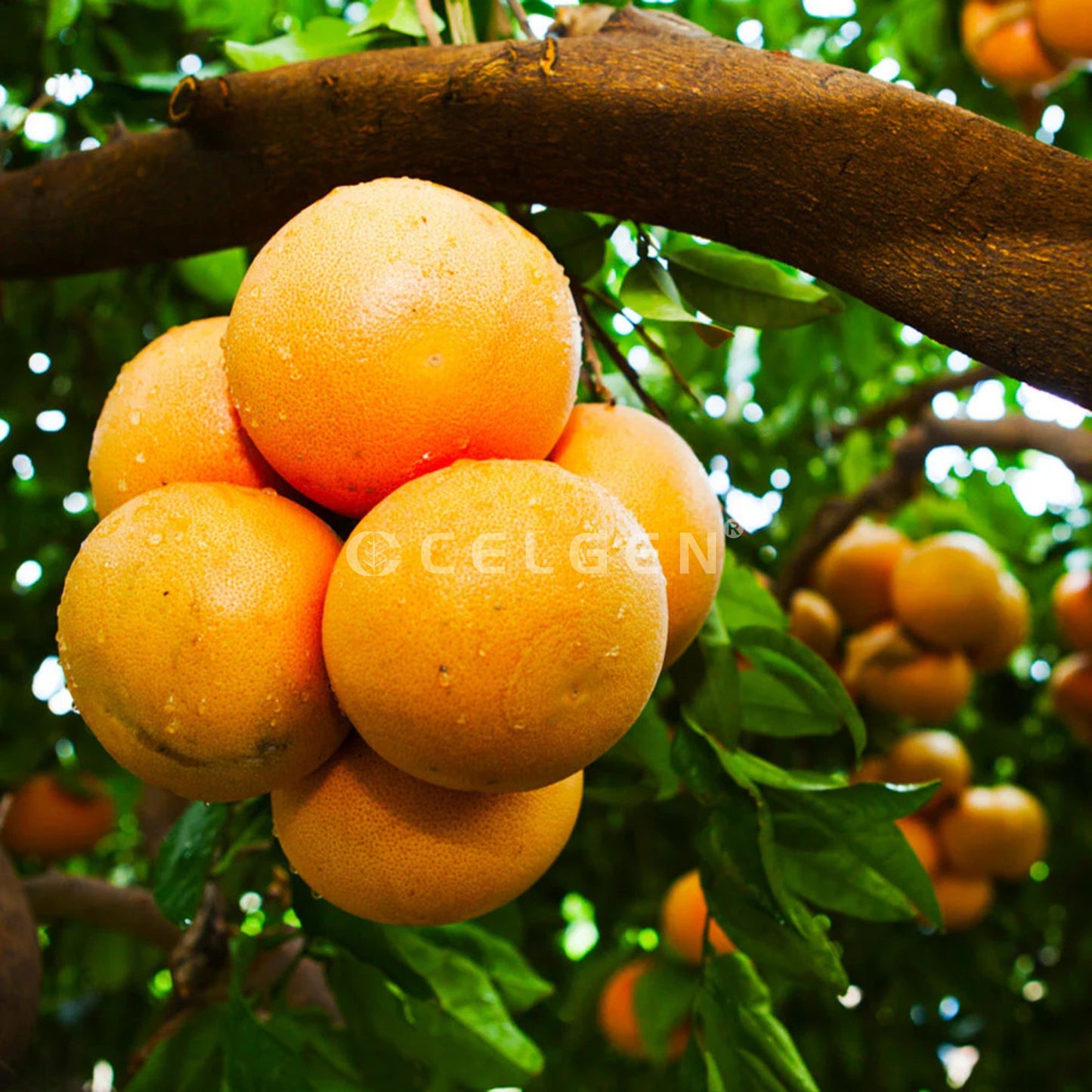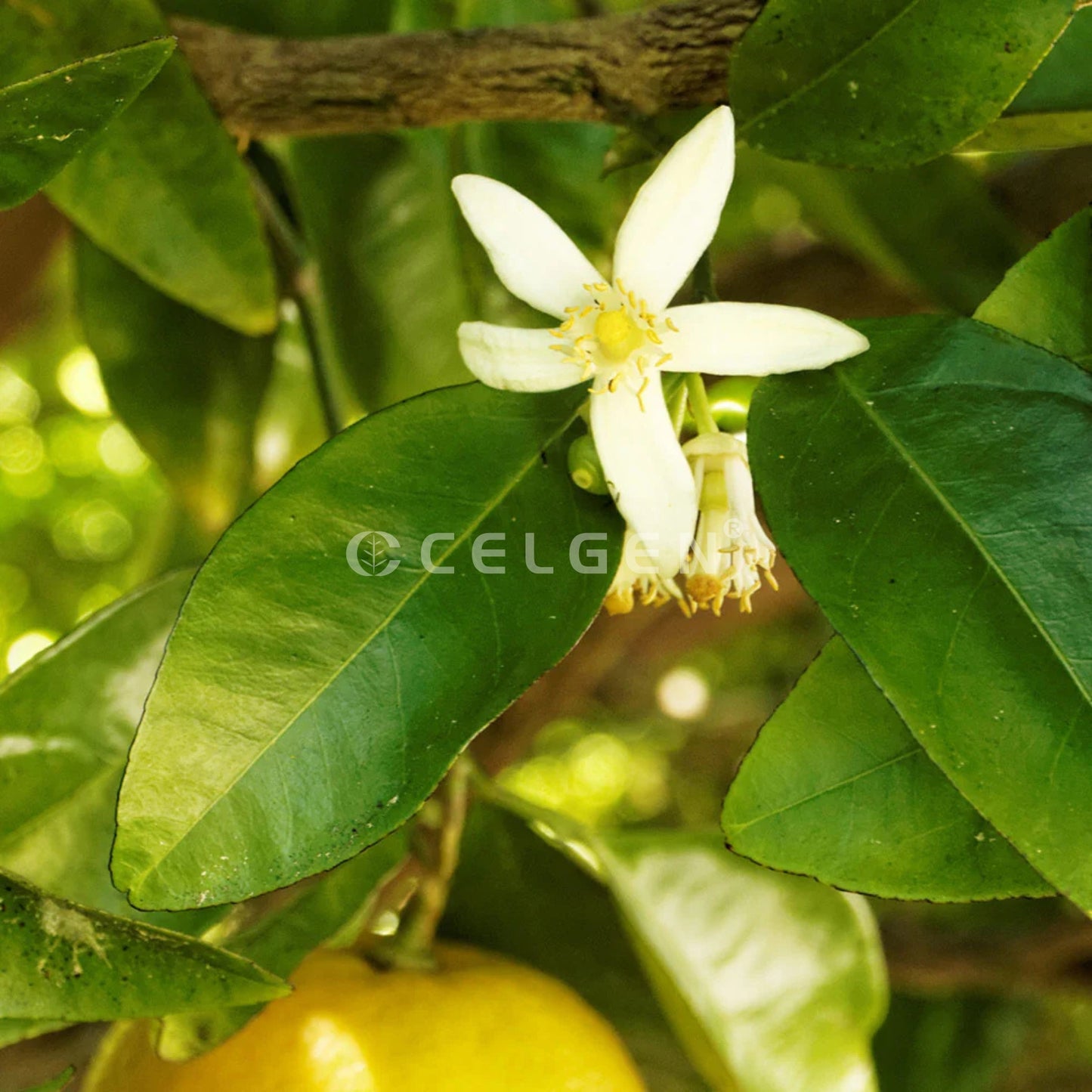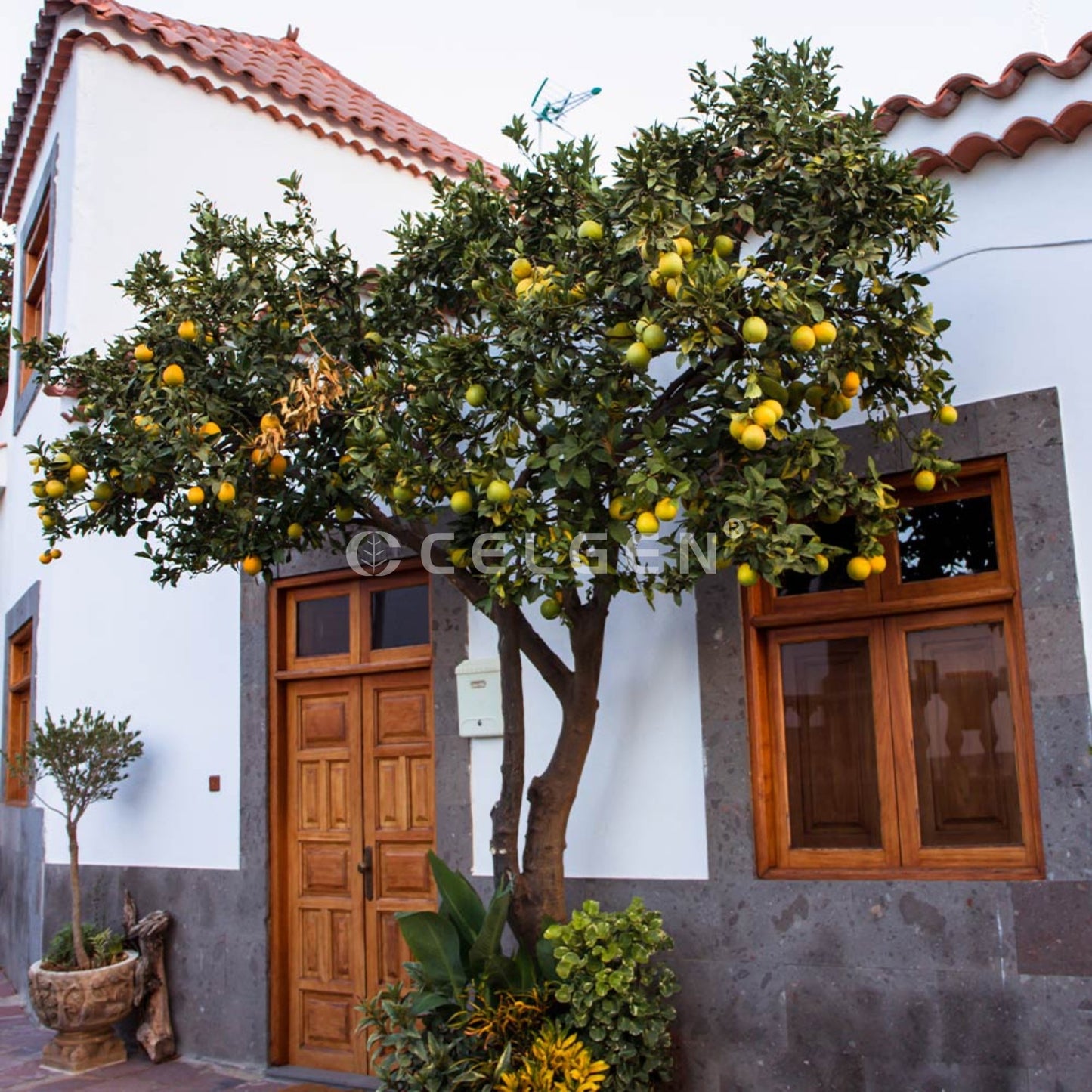My Store
Rio Red Grapefruit Tree – Citrus × paradisi ‘Rio Red’
Rio Red Grapefruit Tree – Citrus × paradisi ‘Rio Red’
Couldn't load pickup availability
Seedless, Sweet & So Juicy You Can Skip the Sugar!
The CELGEN Rio Red Grapefruit Tree delivers the ultimate citrus experience — plump, seedless fruit with a naturally sweet, tangy flavor. Whether enjoyed fresh, juiced, or as a gourmet ingredient, Rio Reds are America’s most popular grapefruits for good reason.
Superior Growth with CELGEN Rootstock
Each tree is expertly grafted onto our own tissue culture–developed rootstock, produced in CELGEN’s laboratory. This ensures:
-
Uniform, vigorous growth
-
Resistance to common soil-borne diseases and nematodes
-
Long-lasting productivity and high fruit quality
Perfect for Gardens or Patios
Rio Red Grapefruit Trees thrive in the ground in warm climates and adapt beautifully to pots in cooler regions. Simply bring your tree indoors during the cold months and place it by a sunny window to enjoy fragrant blooms and fresh citrus even in winter.
Fruit & Tree Characteristics
-
Vibrant green foliage with thick, glossy leaves
-
Pale yellow skin blushed with pink, enclosing a juicy, reddish-pink interior
-
Naturally sweet and seedless, with easy-to-peel skin
-
Compact size when pruned (5–6 ft in pots) or up to 20 ft unpotted in orchards
Harvest Season
Enjoy a generous crop from December to May, providing fresh, home-grown citrus during the months when other varieties are dormant.
Specifications
-
Botanical Name: Citrus × paradisi ‘Rio Red’
-
Fruit: Seedless, sweet, easy to peel
-
Rootstock: Grafted on tissue culture–developed rootstock (CELGEN Laboratory)
-
Mature Height: 5–6 ft in pots, up to 20 ft unpotted
-
Harvest Season: December–May
-
Light Requirement: Full sun (6–8 hrs/day)
-
Pollination: Self-pollinating
-
Uses: Fresh eating, juicing, salads, desserts
Care Guide
1. Planting – Choose a sunny, well-drained location. For pots, select a container twice the size of the shipped plant’s pot with drainage holes.
2. Watering – Water weekly during the first year, increasing in hot/dry weather. Once established, water every 2 weeks or when the top 2 inches of soil are dry.
3. Fertilizing – Use a balanced citrus-specific fertilizer from February to September every 4–6 weeks.
4. Pruning – Remove suckers and prune dead or damaged branches in early spring. Maintain a manageable height for easy harvesting.
5. Pollination – Self-pollinating, but planting two trees will increase yield. Indoor trees can be hand-pollinated with a small paintbrush.
Share




Healthy Plant Received,Nice Packaging
Plant is very healthy, growing well, Your packing is amazing. Please provide Chandler Pomelo i m wating for it




